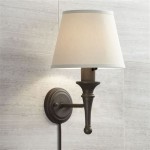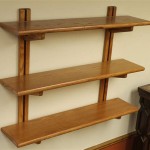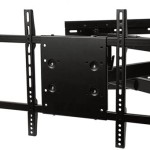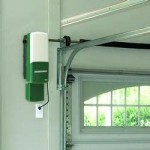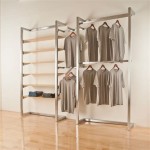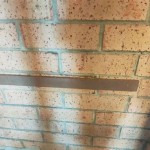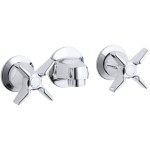Pull Up Bar for Home Wall Mount: A Comprehensive Guide
The pull-up is a fundamental exercise that builds upper body strength, engaging multiple muscle groups including the back, shoulders, arms, and core. Incorporating pull-ups into a regular fitness routine can lead to improved posture, increased muscle mass, and enhanced overall physical performance. For individuals seeking a convenient and accessible way to perform pull-ups at home, a wall-mounted pull-up bar presents a viable and space-saving solution. This article provides a detailed examination of wall-mounted pull-up bars, covering their benefits, selection criteria, installation considerations, and safety precautions.
A wall-mounted pull-up bar is a fitness apparatus designed to be securely attached to a wall. It typically consists of a horizontal bar constructed from steel or other durable metal, along with mounting plates or brackets that are affixed to the wall using bolts or screws. These bars are designed to support significant weight, allowing users to perform pull-ups and other related exercises such as chin-ups, hanging leg raises, and muscle-ups (depending on the bar's design and the user's skill level). Unlike doorway pull-up bars, wall-mounted bars offer greater stability and weight capacity, and do not obstruct doorways when not in use.
Benefits of a Wall-Mounted Pull-Up Bar
The decision to invest in a wall-mounted pull-up bar for home use stems from a variety of advantages it offers compared to alternatives.
Space Efficiency: In comparison to larger freestanding pull-up stations or power racks, a wall-mounted pull-up bar occupies minimal floor space. This is particularly beneficial for individuals with limited room in their homes or apartments. The bar is positioned against the wall, leaving the surrounding area free for other activities.
Stability and Weight Capacity: Wall-mounted pull-up bars, when properly installed, offer a high degree of stability. They are designed to support a substantial amount of weight, often exceeding the capacity of doorway pull-up bars. This makes them suitable for users of varying body weights and fitness levels, including those who incorporate weighted pull-ups into their training.
Versatility: While the primary function of a wall-mounted pull-up bar is to facilitate pull-ups and chin-ups, it can also be used for a range of other exercises. Hanging leg raises, which target the abdominal muscles, can be performed effectively. With the addition of gymnastic rings or suspension straps, the bar can be transformed into a suspension training system, allowing for a wider variety of bodyweight exercises.
Convenience: Having a pull-up bar readily available at home eliminates the need to travel to a gym or fitness center. This convenience encourages more frequent and consistent workouts, leading to faster progress and improved fitness outcomes. The accessibility of the bar makes it easier to incorporate short bursts of exercise into a busy schedule.
Cost-Effectiveness: Over the long term, a wall-mounted pull-up bar can be a cost-effective alternative to a gym membership. The initial investment is typically lower than the cost of several months of gym fees, and once installed, the bar requires minimal maintenance.
Key Considerations When Choosing a Wall-Mounted Pull-Up Bar
Selecting the right wall-mounted pull-up bar requires careful consideration of several factors to ensure it meets individual fitness needs and safety requirements.
Weight Capacity: The maximum weight capacity of the pull-up bar is a critical factor. It is essential to choose a bar that can safely support the user's weight, plus any additional weight that may be added during weighted pull-ups. It is advisable to select a bar with a weight capacity that exceeds the user's current weight to provide a safety margin and accommodate potential weight gain or increases in training intensity. Manufacturers typically specify the maximum weight capacity in the product specifications.
Material and Construction: The quality of the materials used in the construction of the pull-up bar directly impacts its durability and safety. Steel is the most common material used, and the gauge (thickness) of the steel is an important indicator of its strength. A thicker gauge steel will generally provide greater strength and stability. The welds should be smooth and strong, and the overall construction should feel solid and robust.
Mounting Hardware and Wall Compatibility: The type of mounting hardware included with the pull-up bar is crucial for ensuring a secure installation. The hardware should be designed for use with the type of wall to which the bar will be mounted. Concrete or masonry walls generally require different types of anchors than drywall or wood stud walls. Verify that the provided hardware is appropriate for the intended wall, or purchase suitable hardware separately. It is highly recommended to mount the pull-up bar directly to wall studs to maximize stability and weight-bearing capacity. Using a stud finder to locate the studs is essential.
Grip and Ergonomics: The grip of the pull-up bar should be comfortable and provide a secure hold. The diameter of the bar is a key consideration, with most bars ranging from 1 to 1.5 inches in diameter. A knurled or textured surface can improve grip and prevent slippage. Some pull-up bars offer multiple grip options, including neutral grips (palms facing each other) and angled grips, which can target different muscle groups and provide variation in training.
Size and Extension from the Wall: The size of the pull-up bar, specifically its width, should be appropriate for the user's shoulder width. A bar that is too narrow or too wide can lead to discomfort and inefficient movement. The extension of the bar from the wall is another important factor. Sufficient space is needed to allow for full range of motion without hitting the wall. The ideal extension will depend on the user's height and arm length.
Price and Warranty: The price of a wall-mounted pull-up bar can vary depending on the quality of materials, construction, and features. While it is tempting to opt for the cheapest option, it is important to prioritize safety and durability. A longer warranty period can provide peace of mind and indicate the manufacturer's confidence in the product's quality.
Installation and Safety Precautions
Proper installation is paramount to the safety and effectiveness of a wall-mounted pull-up bar. Incorrect installation can lead to the bar detaching from the wall, potentially causing serious injury.
Locating Wall Studs: The first step in the installation process is to locate the wall studs using a stud finder. Wall studs are vertical beams that provide structural support to the wall. Mounting the pull-up bar directly to the studs is the safest and most secure method. Space between studs is typically 16 or 24 inches. Mark the location of the studs clearly.
Drilling Pilot Holes: Once the stud locations have been identified, drill pilot holes through the mounting plates and into the studs. The pilot holes should be slightly smaller than the diameter of the mounting screws or bolts. This will help prevent the wood from splitting and make it easier to drive in the fasteners.
Attaching the Mounting Plates: Align the mounting plates with the pilot holes and attach them to the wall using appropriate screws or bolts. Use a wrench or screwdriver to tighten the fasteners securely. Ensure that the mounting plates are flush with the wall and that there is no movement or play.
Using Appropriate Hardware: Always use the mounting hardware that is specifically designed for the type of wall to which the pull-up bar is being attached. For concrete or masonry walls, use concrete anchors or expansion bolts. For drywall or wood stud walls, use lag screws or wood screws. Avoid using drywall anchors with pull-up bars, as they are not designed to support heavy loads.
Testing the Stability: Before using the pull-up bar, test its stability by applying weight to it gradually. Start by hanging from the bar and gently swinging back and forth. If there is any movement or instability, re-tighten the fasteners or consult a professional installer.
Safety Guidelines: Prior to each use, visually inspect the pull-up bar and mounting hardware for any signs of damage or wear. Ensure that the fasteners are tight and that there are no cracks in the welds or mounting plates. Avoid using the pull-up bar if any defects are detected. Use proper form when performing pull-ups to prevent injuries. Start with assisted pull-ups or other exercises to build strength gradually. Consult with a healthcare professional or certified personal trainer before starting any new exercise program, especially if there are pre-existing medical conditions.
Professional Installation: If unsure about any aspect of the installation process, consider hiring a professional installer. A qualified contractor or handyman will have the experience and tools necessary to ensure a safe and secure installation.
By carefully considering the factors outlined in this article and following the recommended installation and safety guidelines, individuals can select and install a wall-mounted pull-up bar that will provide a safe, effective, and convenient way to perform pull-ups at home.

Wall Mounted Pull Up Aisle Drilling Installation Home Indoor Upside Down Double Rope Fitness Equipment Spine Stretching Cross Bar Small Model

The Best Pull Up Bars According To A Cpt 2025 Garage Gym Reviews

Hashtag Fitness 7in1 Wall Mount Pull Up Bar For Home Latpull Down Cable Machine Attachment At Best S In India Jio

Dolphy Multifunctional Wall Mounted Pull Up Bar Home Gym Multi Function Grip Training Equipment Load Bearing 300kg

Multi Functional Wall Mounted Grip Pull Up Bar Singapore Installation

Bulldog Gear Wall Mounted Pull Up Bar P90 Rustproof Bars

Cougar Wall Mounting Pull Up Chin Bar Solid Fitness Accessory For Home Gym Colour Black

Tips On Selecting A Pull Up Bar For Home Singapore Installation

Mounting A Pull Up Bar On Drywall Do It Securely Walabot Com

Ssi Wall Mounted Pull Up Bar Chin For Home In Black Colour

